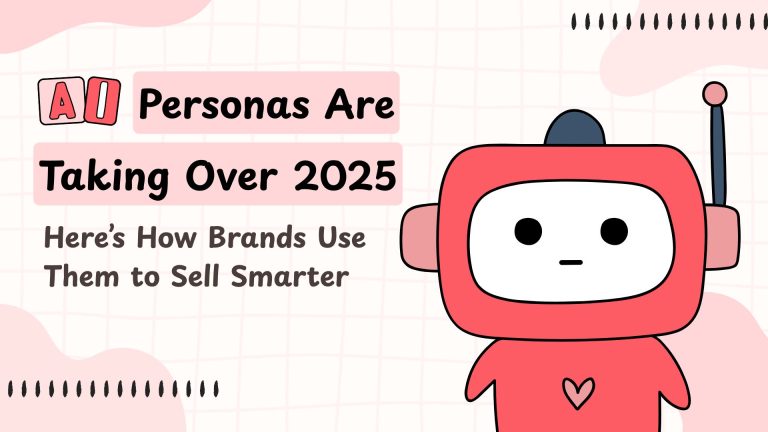10 Diversity Marketing Strategies for Success (+Brand Examples)
Table of Contents
Amidst the shifting sands of modernity, implementing diversity marketing strategies have become a crucial aspect. With consumers becoming increasingly diverse in their backgrounds, beliefs, and behaviors, it is important for businesses to not only recognize this diversity but also embrace it.
No matter the size or industry of your brand, implementing diversity marketing strategies can lead to increased customer loyalty and overall success. Today, in this blog, we will explore the top 10 diversity marketing strategies to help your brand thrive in today’s diverse market. However, instead of directly diving into the strategies, let’s first understand what diversity marketing means.
What Is Diversity Marketing?
Brands that embrace diversity marketing are not only doing the right thing ethically, but they’re also tapping into significant business opportunities and expanding their consumer base.” – Sonia Thompson.
Diversity marketing is a proactive marketing approach that recognizes and celebrates the unique differences of individuals and communities.
It involves understanding the diverse needs, preferences, and values of various demographic groups and tailoring your brand’s messaging, products, and services to meet those needs.
In other words, it’s about creating an inclusive environment where all customers feel seen, heard, and valued by your brand. Now, let’s look at some effective diversity marketing strategies that can take your brand loyalty to new heights!
Effective Diversity Marketing Strategies to Skyrocket Your Brand
Do you know 70% of Gen Z users trust brands that show diversity in ads? So, how do you create effective diversity marketing strategies to boost your brand? Let’s have a look.
1. Creating Inclusive Branding for Diverse Audiences
In diversity marketing, it’s vital to embrace inclusivity in your branding, packaging, and digital signage. When your brand’s imagery and presentation reflect a diverse range of people, it resonates with a broader audience.
This approach fosters a sense of connection and belonging among individuals from various backgrounds, making your brand stand out in a competitive market through the strategic use of performance marketing and analytics. For instance, a thoughtful logo design that incorporates inclusive symbolism can subtly convey your brand’s commitment to diversity while leaving a lasting impression. In the same vein, Envato recently undertook a rebranding strategy to better align with its diverse global community. Their rebrand focuses on inclusivity and creativity, aiming to resonate with a wide range of audiences by reflecting a myriad of voices and styles.
For instance, Crayola made “Colors of the World” crayons after hearing from people and teachers that they needed crayons for all skin colors. There are 24 crayons in the set with different shades for different skin tones.
2. Start With Your Own Team
Having people in your organization from different backgrounds is good for marketing. They bring fresh and creative ideas because they all think differently. This can help the brand connect with more people. Teams with different folks make better choices 87% of the time.
To unlock the full potential of your team, it’s crucial to address and eliminate unconscious bias, which can hinder creativity and innovation.
For example, Accenture started the “Inclusion Starts with I” campaign years ago. It tells employees to be themselves and make a workplace where everyone is welcome.
3. Languages for Everyone
Being able to talk to people in their language is a good way to show you care. It says your brand likes all kinds of people and respects how they talk. This makes people feel like they belong.
For example, Netflix has subtitles and dubbing in lots of languages so people everywhere can enjoy their shows. This helps them grow and reach more people around the world.
Similarly, businesses looking for a more inclusive virtual event platform might consider an alternative to Hopin,which offers features designed to enhance accessibility and engagement for a global audience.
4. Use Interactive Content
People are more likely to engage with a brand when they feel their voice is heard and are able to receive personalized solutions. This is where interactive content comes in. It allows for two-way communication between the brand and its audience, creating a sense of inclusivity and diversity.
You can use polls, quizzes, surveys, chatbots, eCommerce recommendations, AI slideshow presentations, and more to deliver personalized results for every individual. Moreover, you can gather feedback and involve your audience in the brand’s decision-making process.
For example, you can create a quiz like “Which Skin Cream Suits You Best?” to offer personalized product recommendations to people from different skin types and conditions.
This fosters inclusivity, helps you understand your audience better, and tailor your marketing strategies accordingly. You can use tools like Outgrow to create such interactive experiences in minutes. If you want to give it a try, go for its 7-day free trial.
5. Diversify Product Offerings
Diversity marketing isn’t just about the people you reach; it’s also about the products you offer. Having a wide range of products can be a savvy marketing strategy because it attracts a larger and more varied customer base.
For example, Fisher-Price has toys for kids with disabilities, like the Fisher-Price Linkimals Smooth Moves Sloth. It has different textures and sounds to help kids explore their senses.
6. Harness the Power of Data
To succeed in diversity marketing, creating effective strategies after conducting a comprehensive SWOT analysis is crucial. The best way to do that? Data! Start by gathering as much information as possible about the folks you want to reach.
This can include demographic data such as age, gender, ethnicity, and income level. Also, use an email checker to verify their email addresses to avoid landing in your recipient’s spam. But don’t stop there – go beyond the basics and dig deeper into their interests, values, and behaviors and avoid appearing as potential spam.
This will help you understand what truly drives them and how best to connect with them. Once you have a solid understanding of your audience, it’s time to develop targeted marketing strategies that speak directly to them. This list post of social media management tools for agencies has some great tools for getting to know your audience.
7. People in Pictures
Representation matters. When people see others like them in marketing materials, they feel seen and understood. Make sure to include diverse groups of people in your visuals to show that your brand is inclusive and welcoming to all. A study by Shutterstock found that most Gen X and Millennials think brands look better when they show diverse people in their ads.
For example, Ben & Jerry’s shows many different people in their ads to promote everyone being welcome. Take a look at their ad Peace, Love & Ice Cream that narrates a short story.
8. Listen to People
Listening to what people say helps make better marketing. When we hear from people of all backgrounds, we can understand what they like and make better plans. 89% of people are more likely to buy from a company that listens to their feedback.
For example, Starbucks has the “My Starbucks Idea” platform where people can share their thoughts directly with the company. It’s a way for all kinds of coffee lovers to talk to Starbucks.
9. Caring About Important Stuff
Saying your brand cares about important things is a good strategy. It means your marketing is connected to causes that support diversity and being fair to everyone. This makes people feel strongly about your brand and they are more likely to choose it over other options. 86% of people like buying from companies that care about what they care about.
For example, Procter & Gamble’s “The Talk” campaign talks about difficult conversations between Black parents and their kids about racism and unfairness. It’s a strong and touching campaign.
10. Establish Formal Mentoring Programs
One strategy for diversity marketing is to establish a formal mentoring program. This can help create a more inclusive and diverse workplace and provide opportunities for employees from different backgrounds to learn from each other.
Mentoring programs can also help employees develop new skills and perspectives, leading to innovative ideas that benefit the brand’s marketing efforts.
Companies like Microsoft have implemented formal mentorship programs focused on diversity and inclusion to support career growth and promote a culture of inclusivity.
Mistakes to Avoid to For Effective Diversity Marketing Strategies
Let’s focus on the top 5 mistakes to avoid in diversity marketing, with clear explanations and a friendly tone:
1. Faking It (or Tokenism)
This is like inviting someone to a party just to make it look good but not really including them in the fun. In marketing, it’s when you throw in a diverse face or two without really thinking about what that means.
For example, don’t just stick a person of color in your ad and call it a day. Instead, think about how you can genuinely represent different people in your marketing. Ask yourself: Are we showing real stories? Are we giving these folks a real voice in our campaign?
Remember, people can spot a fake from a mile away. Be genuine in your inclusion efforts.
2. Stereotyping
This is like assuming all Italians love pizza or all Canadians say “eh” after every sentence. It’s oversimplifying and can be pretty offensive. In your marketing, avoid using clichés about different groups. Don’t assume all older people are tech-challenged, or all young people are glued to their phones.
Instead, show people as individuals with unique traits. Maybe your ad features a tech-savvy grandma or a young person who loves old-school letter writing. The key is to surprise people and break those stereotypes.
3. Not Having a Diverse Team
Imagine trying to cook a complex dish without ever tasting it. That’s what it’s like trying to create diverse marketing without a diverse team.
If everyone on your team comes from similar backgrounds, you’re likely to miss essential perspectives. You might accidentally say something offensive without realizing it or miss out on great ideas that would resonate with different groups.
Try to build a team that reflects the diversity of your audience. If you can’t find anyone locally for a proposed role, you could consider hiring a professional overseas through a Global Professional Employer Organization (Global PEO) solution. And if you can’t hire right away, consider bringing in consultants from different backgrounds to give input on your campaigns.
4. All Talk, No Action (Performative Allyship)
This is like telling your friend you’ll help them move but never show up on a moving day. It’s making big promises about diversity but not following through.
For instance, don’t just post a black square on social media for Black Lives Matter if you’re not going to make real changes in your company. People see through that pretty quickly.
Instead, back up your words with action. If you say you support diversity, show it in your hiring practices, product development, and long-term marketing strategies. For companies, including app development companies, incorporating diversity into your marketing activation strategies is essential. Align these strategies with your company’s values to ensure authentic representation. Make it a part of your company’s DNA, not just a one-time campaign.
5. One-Size-Fits-All Thinking
This is like assuming everyone wears the same shoe size. It doesn’t work for shoes, and it definitely doesn’t work for marketing to diverse groups. Don’t lump all Latinos together, or all LGBTQ+ folks, or all people with disabilities. Within these groups, there’s a ton of diversity.
Instead, do your homework. Research the specific needs, preferences, and experiences of different subgroups. Maybe young Latinos in California have different interests than older Latinos in Florida. Maybe a gay man in a rural area has different concerns than a lesbian woman in a big city.
Final Thoughts
In the ever-evolving marketing landscape, diversity is not just a buzzword; it’s a driving force behind brand success. By implementing these strategies, you’ll not only broaden your customer base but also create a lasting impact that resonates with your audience. So, let’s make the marketing world more inclusive and diverse, one campaign at a time!
Also, did you know that interactive content boosts 2X engagement and conversions with your customers? Well, you do now. Take advantage of interactive content before your competition does. Start your free trial n ow!







